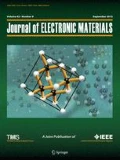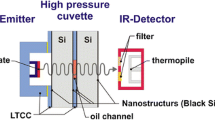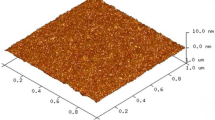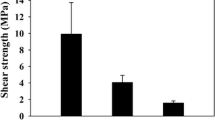Abstract
Two experiments were performed that demonstrate an extension of the ion-cut layer transfer technique where a polymer is used for planarization and bonding. In the first experiment hydrogen-implanted silicon wafers were deposited with two to four microns low-temperature plasma-enhanced tetraethoxysilane (TEOS). The wafers were then bonded to a second wafer, which had been coated with a spin-on polymer. The bonded pairs were heated to the ion-cut temperature resulting in the transfer of a 400 nm layer silicon. The polymer enabled the bonding of an unprocessed silicon wafer to the as-deposited TEOS with a microsurface roughness larger than 10 nm, while the TEOS provided sufficient stiffness for ion cut. In the second experiment, an intermediate transfer wafer was patterned and vias were etched through the wafer using a 25% tetramethylammonium hydroxide (TMAH) solution and nitride as masking material. The nitride was then stripped using dilute hydrofluoric acid (HF). The transfer wafer was then bonded to an oxidized (100 nm) hydrogen-implanted silicon wafer. After ion-cut annealing a silicon-on-insulator (SOI) wafer was produced on the transfer wafer. The thin silicon layer of the SOI structure was then bonded to a third wafer using a spin-on polymer as the bonding material. The sacrificial oxide layer was then etched away in HF, freeing the thin silicon from the transfer wafer. The result produced a thin silicon-on-polymer structure bonded to the third wafer. These results demonstrate the feasibility of transferring a silicon layer from a wafer to a second intermediate “transfer” or “universal” reusable substrate. The second transfer step allows the thin silicon layer to be subsequently bonded to a potential third device wafer followed by debonding of the transfer wafer creating stacked three-dimensional structures.
Similar content being viewed by others
References
M. Bruel, U.S. patent 5,374,564 (1994).
M. Bruel, Electron. Lett. 31, 1201 (1995).
Q.-Y. Tong, K. Gutjahr, S. Hopfe, and U. Gösele, Appl. Phys. Lett. 70, 1390 (1997).
L. Di Cioccio, Y. Le Tiec, F. Letertre, C. Jaussaud, and M. Bruel, Electron. Lett. 32, 1144, (1996).
E. Jalaguier, B. Sapar, S. Pocas, J.F. Michaud, M. Zussy, A.M. Papon, and M. Bruel, Electron. Lett. 34, 408 (1998).
K.D. Hobart and F.J. Kub, Electron. Lett. 35, 675 (1999).
J.P. Colinge, Silicon-on-Insulator Technology: Materials to VLSI (Amsterdam: Kluwer Academic Publ., 1991), p. 197.
C.H. Yun and N.W. Cheung, Proc. IEEE Int. SOI Conf. (Piscataway, NJ: IEEE, 1998), p. 165.
Author information
Authors and Affiliations
Rights and permissions
About this article
Cite this article
Colinge, C., Roberds, B. & Doyle, B. Silicon layer transfer using wafer bonding and debonding. J. Electron. Mater. 30, 841–844 (2001). https://doi.org/10.1007/s11664-001-0068-1
Received:
Accepted:
Issue Date:
DOI: https://doi.org/10.1007/s11664-001-0068-1




